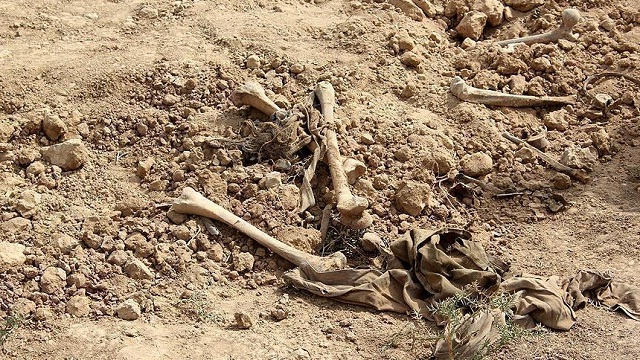
Baghdad, Iraq | AFP | More than 200 mass graves containing up to 12,000 victims have been found so far in Iraq that could hold vital evidence of war crimes by the Islamic State group, the UN said Tuesday.
The United Nations in Iraq (UNAMI) and its human rights office said they had documented a total of 202 mass graves in parts of western and northern Iraq held by IS between 2014 and 2017.
Even more sites could be uncovered in the months to come, the report warned, urging Iraqi authorities to properly preserve and excavate them to provide closure for victims’ families.
“The mass grave sites documented in our report are a testament to harrowing human loss, profound suffering and shocking cruelty,” said the UN’s representative in Iraq, Jan Kubis.
“Determining the circumstances surrounding the significant loss of life will be an important step in the mourning process for families and their journey to secure their rights to truth and justice,” he said.
IS overran swathes of Iraq in 2014, executing fighters and civilians en masse and using other forms of repression to seize and keep territory in the country’s north and west.
The mass graves may “contain critical forensic material” that could help uncover the details of these violations, as well as identify the victims, the UN said.
UN investigators in August began collecting evidence on war crimes, crimes against humanity, or genocide for Iraqi courts to use in trials of accused IS militants.
– Infamous sinkhole –
Out of the 202 mass graves documented in the UN’s new report, just 28 of them have been excavated and 1,258 bodies exhumed by Iraqi authorities.
Nearly half the total sites are in Nineveh province, where IS’s onetime Iraqi capital Mosul lies and where the jihadists committed mass atrocities against the Yezidi minority.
According to Iraq’s high commission on human rights, more than 3,000 Yezidis remain missing in Nineveh, in addition to another 4,000 people.
The rest of the sites are distributed in the northern regions of Kirkuk and Salaheddin, or Anbar in the west.
Some of those that have yet to be excavated are secured by Iraqi armed forces, but others remain endangered by fighting or are contaminated by explosive devices left behind by IS.
The largest, according to the report, is expected to be the Khasfa sinkhole south of Mosul, where as many as 4,000 people may have been killed.
IS has planted explosives at Khasfa, which killed a journalist and three members of Iraqi paramilitary forces last year.
After capturing Mosul, Iraqi government forces went on to oust IS from its other urban strongholds and declared victory against the jihadists in late 2017.
 The Independent Uganda: You get the Truth we Pay the Price
The Independent Uganda: You get the Truth we Pay the Price



